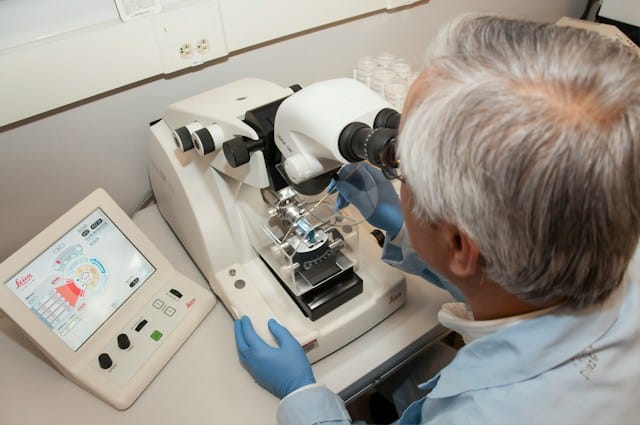Nanotechnology, a scientific field that operates at the scale of a billionth of a meter, is revolutionizing the healthcare industry. This technology is unlocking new potentials in medical treatments, accelerating discovery, and providing solutions to some of the most complex medical challenges. This article dives into how nanotechnologies are contributing to more efficacious medical treatments and improving patient outcomes.
Better Drug Delivery Systems
In the realm of pharmacology, one of the most significant problems is delivering drugs to the exact location where they are needed without affecting healthy cells. Nanotechnology is reshaping this dynamic.
Avez-vous vu cela : What is the future of wearable tech in personal health monitoring?
Nanoparticles, engineered to a size that allows them to circulate in the bloodstream, can be loaded with drugs and target specific cells or tissues. They can navigate the body’s intricate network of blood vessels, reaching the deepest recesses where conventional drug delivery systems fail. For instance, in cancer treatment, nanoparticles can be designed to preferentially latch onto cancer cells, sparing healthy ones and reducing side effects.
Moreover, nanotechnology-enabled drug delivery systems can control the drug release rate, ensuring that the therapeutic substance remains in the body for an extended period, thus maintaining the optimal drug concentration and enhancing efficacy.
A lire en complément : Ethical issues related to the use of My Image GPT: intellectual property, bias and manipulation
Enhanced Imaging and Diagnostic Techniques
Early disease detection is crucial in successful treatment. Nanotechnologies are playing an essential role in enhancing imaging techniques and diagnostics, making it possible to identify diseases in their earliest stages.
Nanoparticles are now utilized as contrast agents in medical imaging techniques such as MRI, CT scans, and ultrasound. They enhance the visibility of structures or fluids within the body, providing clearer and more detailed images. For instance, nanoparticles can cross the blood-brain barrier, offering unprecedented imaging capabilities of the brain.
Nanotechnologies are also facilitating the development of sensitive and rapid diagnostic tools. Nanosensors, able to detect minute quantities of disease biomarkers, are paving the way for early and precise disease diagnosis.
Personalized and Precision Medicine
The vision of personalized medicine – tailoring treatments to individual patients’ specific conditions and genetic makeup – is becoming a reality, thanks to nanotechnology.
By analyzing a patient’s health data and biological markers at the molecular level, healthcare providers can make more informed decisions about the most effective treatment options. Nanotechnology can identify genetic mutations or variations that make individuals susceptible to certain diseases. By leveraging this information, healthcare professionals can design personalized medical treatments to correct these genetic abnormalities.
Additionally, nanotechnology enables the development of precision medicine. This approach involves using nanoparticles to deliver drugs directly to diseased cells, significantly reducing side effects and improving treatment outcomes.
Regenerative Medicine and Tissue Engineering
Nanotechnology is also making significant strides in the field of regenerative medicine and tissue engineering.
Nanofibers, for instance, are used to create scaffolds that mimic the body’s extracellular matrix, providing support for the growth of new tissues or organs. This approach is particularly beneficial in wound healing, bone regeneration, and organ transplantation.
Nanotechnologies are also enhancing the capabilities of stem cell therapy. Nanoparticles can be used to deliver growth factors or genes into stem cells, influencing their growth and differentiation. This technique could potentially help regenerate damaged tissues or organs.
Antimicrobial Treatments
As antibiotic resistance becomes an increasing global concern, nanotechnology offers a promising solution. Nanoparticles, with their large surface area to volume ratio, can interact with microbes in ways that conventional antimicrobial agents can’t.
Nanosilver, for instance, is now used in wound dressings for its potent antibacterial properties. Nanoparticles can also penetrate biofilms – the protective shields that bacteria form to resist antibiotics. This penetration can enhance the effectiveness of antibiotic treatments.
In summary, nanotechnology is revolutionizing medical treatments in myriad ways. From improved drug delivery systems to enhanced imaging and diagnostics, personalized medicine, tissue engineering, and antimicrobial treatments, this cutting-edge technology promises to bring about a new era in healthcare. As research and development continue, we can expect even more groundbreaking applications of nanotechnology in medicine.
Improved Cancer Treatments
Cancer, a group of diseases characterized by the uncontrolled growth and spread of abnormal cells, remains one of the most challenging medical conditions to treat. Traditional cancer treatment methods such as chemotherapy and radiation are often associated with harsh side effects due to their lack of specificity – they destroy not only cancer cells but also healthy cells. However, nanotechnology holds the promise of addressing this problem and revolutionizing cancer treatment.
Nanoparticles can be engineered to specifically target cancer cells, thereby enhancing the effectiveness of therapy and reducing adverse effects. Nanoparticles can be loaded with chemotherapy drugs and directed to tumor sites, sparing healthy cells from damage. For example, liposomes, a type of nanoparticle, have been successfully used to deliver chemotherapy drugs to cancer cells while minimizing exposure to healthy tissues.
Additionally, nanoparticles can be designed to be responsive to stimuli, such as changes in pH, temperature, or the presence of specific enzymes, which are often found in the tumor microenvironment. These smart nanoparticles can release their therapeutic load precisely at the tumor site, further enhancing the specificity of the treatment.
Another emerging application of nanotechnology in cancer treatment is the use of nanoparticle-based therapeutic vaccines. The nanoparticles can deliver cancer antigens and immune-stimulatory molecules to immune cells, triggering a robust immune response against the tumor.
Nanotechnology in Neurological Disorders Treatment
Neurological disorders such as Alzheimer’s disease, Parkinson’s disease, and multiple sclerosis pose significant challenges to the medical community due to their complexity and the body’s protective barriers that limit drug delivery to the brain. Nanotechnology is providing promising strategies to overcome these hurdles.
Nanoparticles can cross the blood-brain barrier, a protective shield that prevents potentially harmful substances from reaching the brain. By packaging drugs into nanoparticles, scientists can potentially deliver therapeutic agents directly to the brain, thereby enhancing their effectiveness and reducing side effects.
In the case of Alzheimer’s disease, nanoparticles have been used to deliver drugs that can break down the amyloid-beta plaques that are characteristic of the condition. For Parkinson’s disease, nanoparticles have been used to deliver dopamine, the neurotransmitter that is deficient in the disease, directly to the brain.
Furthermore, nanotechnology can also contribute to the early detection of these neurological disorders. Nanoparticles can be used as contrast agents to improve the quality of brain imaging, thereby aiding in the early diagnosis and treatment of these conditions.
Conclusion
In conclusion, nanotechnologies are significantly contributing to making medical treatments more effective. They are helping to address some of the most pressing challenges in healthcare, from cancer to neurological disorders. The use of nanoparticles in targeted drug delivery improves the specificity and efficiency of treatments, reducing side effects and improving patient outcomes. Nanotechnology is also enhancing diagnostic techniques, enabling early disease detection and personalized treatment strategies. In the future, as research and development in nanotechnology continue to advance, we can anticipate even more groundbreaking applications in medicine. It is clear that nanotechnology has the potential to revolutionize the healthcare industry and pave the way for a new era of medical treatments.











